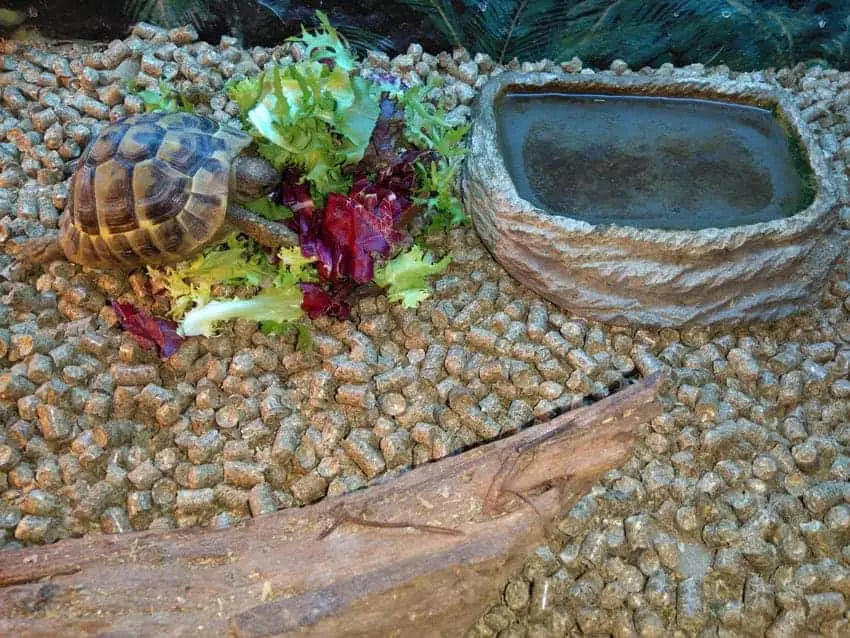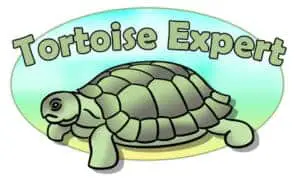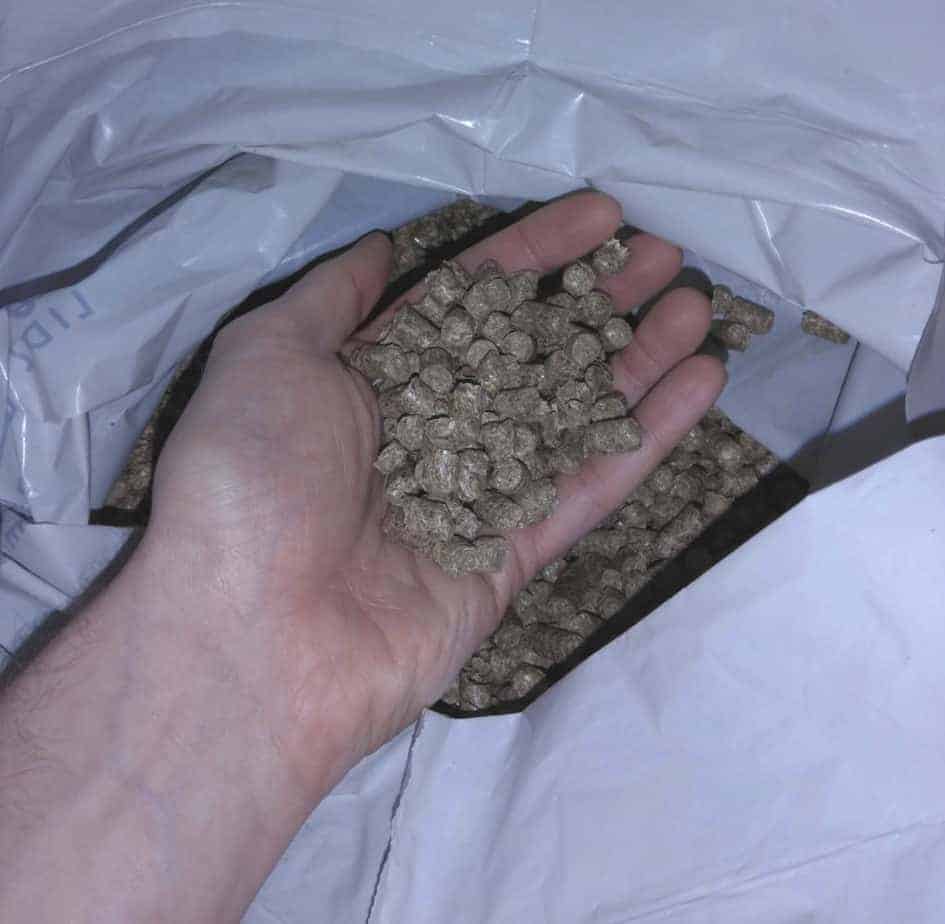
Unless you subscribe to a fairly radical approach to caring for hatchling and juvenile tortoises then you’ll probably agree that keeping them indoors in a properly set up tortoise table or vivarium is essential, permanently for at least the first year of their lives.
This then tapers off to be less and less time indoors, until they are about 5 years old when they should spend most of their time outside, only really being bought inside for hibernation or over wintering.

Given that juveniles spend almost all of their time in their indoor enclosures it is of course of huge importance to make sure the conditions inside said enclosures are optimised to promote good health and proper development.
One of the most important items within your tortoise enclosure is the substance that lines the base of the enclosure, known as the ‘substrate’.
In my experience soil/loam based substrates along with straw pellets are the best options on the market, as neither pose a threat to the tortoise, and do a good job of absorbing excess moisture.
Obviously the substrate is designed to simulate the natural environment of your tortoise, but it does more besides being an aesthetically pleasing piece of scenery.
What is the Purpose of The Substrate?
I don’t think it’s any coincidence that tortoise’s have short legs and are basically in close proximity to the ground at all times. This means that whatever is going on at ground level is either deliberately important to the tortoise, or if not will have a profound effect on its health.
The microclimates and particulates that operate at ground level will have an effect on the tortoise’s shell, skin, and perhaps most importantly of all, its breathing.
Generally speaking all tortoises require a fair degree of humidity at ground level in order to stay healthy. Even mediterranean and desert tortoises spend much of their time burrowed into sandy ground, which although dry on the surface, are actually fairly moist when the tortoise burrows down a few inches.
However it’s a tricky balance trying to maintain the correct level of humidity with your own substrate. Too dry and the tortoise may suffer from dehydration, too wet and bacteria can thrive, leading to shell rot.
You’ll find a lot of impassioned opinions on what substrates you should or shouldn’t use for your tortoise’s substrate, so much so that I don’t believe there is a clear answer. Each species differs in their exact requirements, although the same propensity for shell rot or dehydration is pretty universal across the various species.
What is pretty clear though is that some substrates are a definite no no, for the simple fact that can actually prove to be lethal to your tortoise.
If you’d like more detailed information on caring for your tortoise, all in one convenient place be sure to check out our species-specific eBooks on tortoise husbandry. These cover everything from properly setting up your tortoise habitat (including further information on substrates), to correct heating, feeding and breeding management.
What Types of Substrate Are There? What Are The Pros And Cons of Each Type?
Commercially available substrates vary in their composition from fine and dry sandy substances, to moist soils, to larger dry ‘chippings’. Some popular varieties include:
Play Sand
Play sand has been used historically among tortoise owners, probably because it appears to be close to the natural environment of desert and mediterranean tortoises.
Despite the fact that this might well be true, pure sand isn’t recommended as a substrate, largely due to the fact that it can be accidentally ingested.
Obviously sand can’t be digested, and if ingested it can sit in the gut of the tortoise. Repeated compaction of sand in the gut can be fatal, so it is best avoided.
Sand is also sometimes mixed with a more moist substrate such as a loam compost to try and provide the balance between being too dry or too moist. To me this doesn’t seem like a great idea either though, as the same risk of sand ingestion/compaction exists, even if it takes longer to be dangerous.
Soil or Loam Based Substrates
Provided it doesn’t contain any pesticides or fertilizers, soil is the ideal natural substrate for captive indoor tortoises. Sterilised soil is heat treated to kill off any bacteria or fungus, which is even better for preventing disease from developing in your tortoise.
As mentioned above, sand is often mixed with soil to prevent it from turning too ‘muddy’ when too much water is present in the soil. It’s far better to use another organic substance in combination with the soil if you do choose to go down the mixture route.
If I was to choose a substrate to mix with soil I would go for peat moss as it’s small enough to be safe if accidentally ingested, and it does a good job of absorbing excess moisture
Wood Chips
Bark or wood chips look good, and they’re a cost effective natural option if you have access to a supply of them from a non commercial source. Large chips also have the distinct advantage of being ‘washable’ to a certain extent, so you can in theory reuse them when they get soiled. Although there is of course a limit to how many times you’d want to do this.
The downside to wood or bark chips; besides the potential for the tortoise to ingest mould, fungus or bacteria introduced to their enclosure on the chips; is that as with sand, ingesting wood or bark chips can cause serious blockages within the tortoise’s gastrointestinal tract, and sharp pieces of bark can even pierce the walls of the intestine.
Both scenarios can prove fatal, so use wood chips with caution, keeping them well clear of the area where you provide food for the tortoise.
Straw Pellets
I might come under fire for this one, but I actually prefer this type of substrate over most others.
Compacted straw pellets are a natural product and don’t pose the same risk of impaction within the gastrointestinal tract as other ‘bulky’ substrates (that I can find evidence of anyway), and besides in their dry state the pellets are too large to be accidentally ingested anyway.
Straw pellets are also easy for your tortoise to dig into as it won’t take them long to go very far – if you think of it as like a ball pit for your tortoise you’ll see what I mean
There is an argument that old pellets to turn mouldy, particularly when they get wet and compacted, so it is necessary to clean out this type of substrate fully every 2 weeks, although the same is true for every other type of substrate anyway.
Hemp
Although popular among a lot of tortoise owners, it’s difficult to see why hemp would ever be considered a good choice of substrate.
The problem is that, like wood chippings, hemp fibres can be very sharp and normally come in a form small enough for tortoises to swallow. This makes the risk of puncturing the gastrointestinal tract dangerously high, and there have also been reports of injuries to the other parts of a tortoise such as the eyes or cloaca.
How Much Substrate Should I Put Down?
Because the temperature and conditions inside your tortoise table or vivarium should be fairly well regulated, the natural necessity to burrow for shelter or safety for the most part doesn’t exist.
Nevertheless burrowing still forms a natural part of a tortoises behaviour, so I would consider it cruel to deny them the ability to burrow.
Therefore it’s necessary to provide a deep enough layer of substrate to allow your tortoise to burrow a fair way down, so I would say a good 2 or 3 inches across the entire enclosure. If you want to avoid burning through to much substrate too quickly you can just make it deep enough to dig in one corner for example.
How Often Should the Substrate Be Changed?
To some degree this depends on how much your tortoise soils their substrate, and of course what the substrate is, but the general rule I stick to is to fully replace it no less frequently than every 3 weeks.
With my preference for straw pellets, it’s easy to see which areas have become soiled because poo shows up easily against the light coloured straw background, and if the pellets gets wet they disintegrate, making it easy to know when to replace areas that have become soiled.
So although I change the straw pellet substrate every 2 to 3 weeks it’s rarely all in one go, rather I’m replacing areas of it on a daily basis, such that the whole lot gets replaced bit by bit over the course of a few weeks.
With a substrate such as soil, it can sometimes be more difficult to spot the poo against the soil meaning you could miss trace amounts of it. Likewise if it gets wet you won’t necessarily know about it, especially if it then dries out again. So replacing the whole lot in one go every 2 or 3 weeks is the more likely strategy with a soil based substrate.


